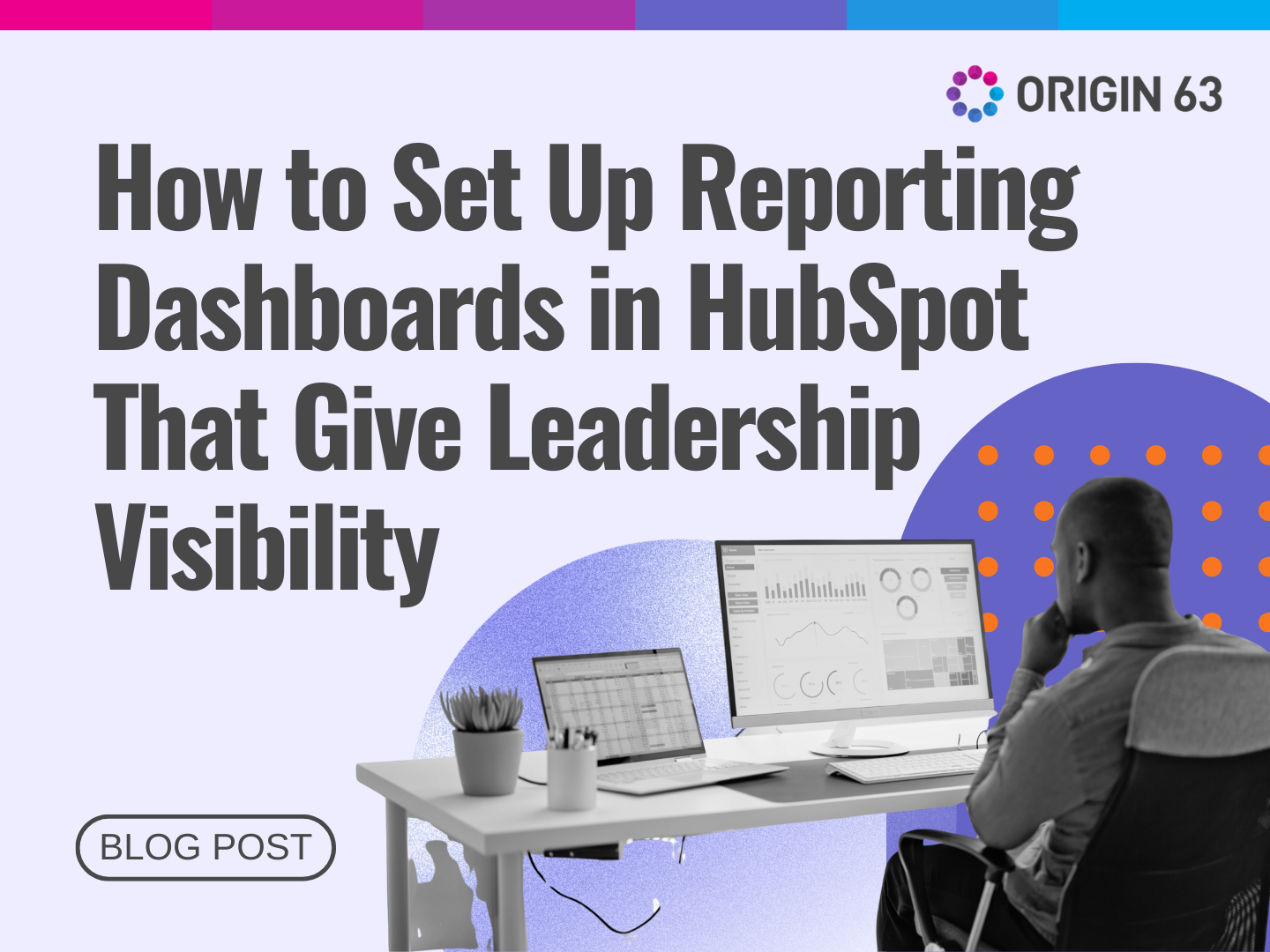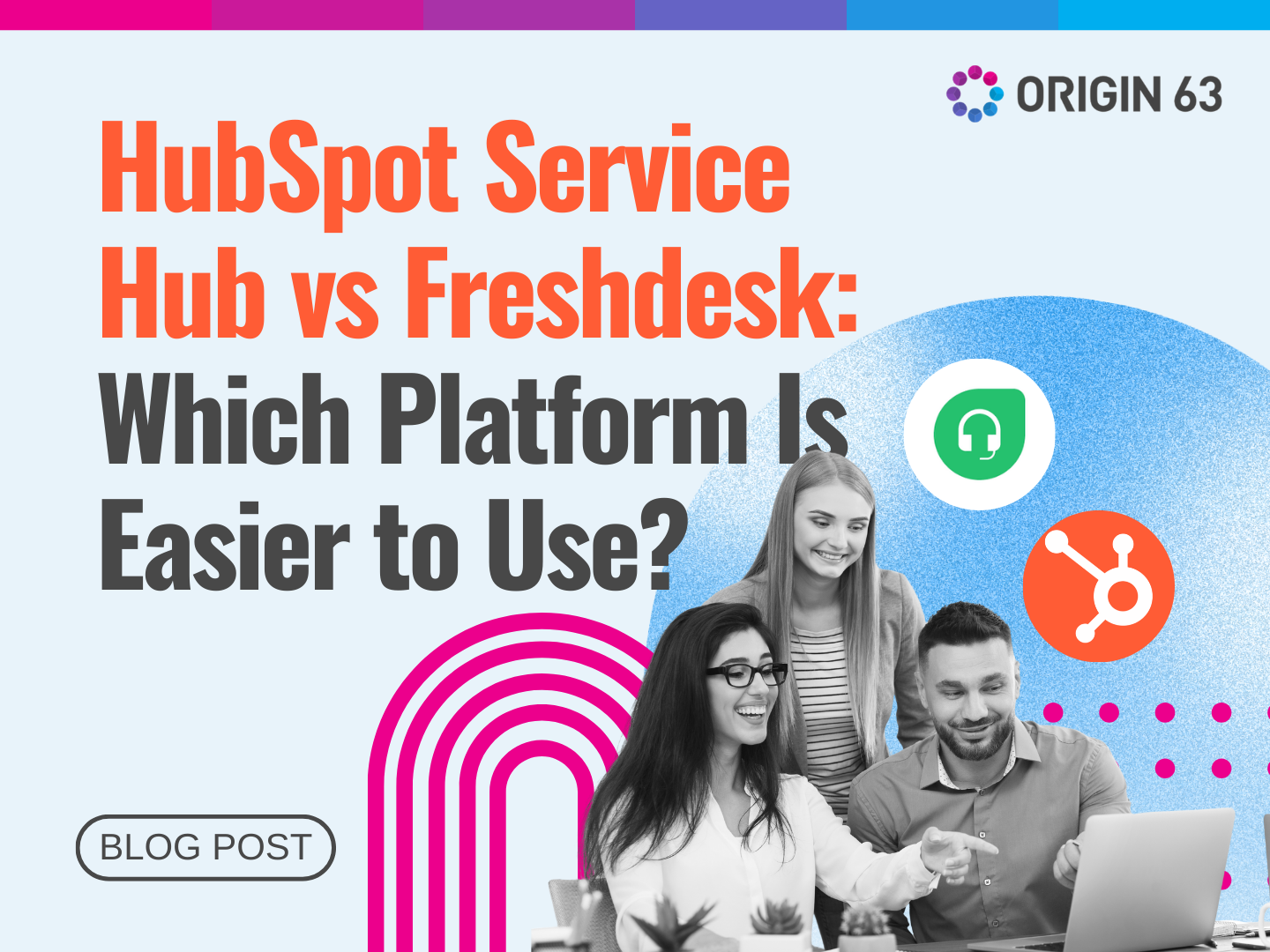Data should make decisions easier, not harder. But for many teams, reports feel messy, overwhelming, or incomplete. When key information is buried in spreadsheets or hard-to-read charts, it slows everything down.
But with tools designed to make reporting more visual and user-friendly, HubSpot helps you understand what’s working, what needs attention, and what to do next.
In this guide, we’ll walk through everyday data struggles and show you how HubSpot’s reporting tools make your data more functional, faster.
What We Mean by “Better Visualization and Usability”—and Why It Matters

Visualization is showing your data—think charts, graphs, and tables. Good visualizations make patterns obvious and help you spot what’s working or needs fixing. If you can look at a chart and quickly say, “Oh, revenue dropped here,” that’s a good visualization doing its job.
Usability is how easy it is to use your reports. Can your team find the numbers they need? Can they filter results by date, rep, or region without getting lost? Can they tell what action to take next?
When both things work well, your data becomes more than just numbers—it becomes a tool.
Here’s why this matters:
- It saves time. No more digging through spreadsheets.
- It reduces mistakes. Clear views mean fewer missed red flags
- It speeds up decisions. Everyone can act faster when they understand what’s going on.
The result is a team that’s more aligned, proactive, and better equipped to grow.
3 Common Data Challenges—and How HubSpot Solves Them
Most teams today know that data matters. In fact, over 91% of organizations saw real value from their data and analytics investments in 2023.
But just having data isn’t enough. The real challenge is making sense of it—fast enough to act. That’s why improving data usability and visualization has become a top priority for many teams—and where HubSpot’s reporting tools can help.
Here are three common roadblocks companies face, plus how HubSpot makes them easier to overcome.
Challenge #1: It’s Hard to See the Full Picture When Data Is Scattered
You can’t make wise decisions when your team only sees part of the story. Internal performance metrics might be tracked in HubSpot, but your market data, financials, or customer feedback might live in other tools—like Google Sheets, Slides, or social media dashboards.
That means people constantly switch tabs, copy numbers into reports, or miss context entirely.
This slows you down. It also makes it harder to communicate clearly with stakeholders who need everything in one place, especially executives who expect a complete picture at a glance.
Solution: Embed External Content into Your HubSpot Dashboard

HubSpot makes bringing outside data into your reporting setup easy, so your dashboards don’t miss a beat.
You can embed tools like:
- Google Sheets to show updated performance number
- Google Slides for a visual summary or presentation deck
- Live social feeds to track public engagement in real time
This lets you pair HubSpot reports with data from other sources on one screen. So whether you’re preparing for a leadership meeting or tracking campaign results, you won’t need to hunt for extra files or flip between tabs.
To set it up, head to your dashboard in HubSpot, click Actions, then choose Add external content. Paste the link or embed code, give it a title, and save. That’s it—your dashboard now gives a complete view of what’s happening, inside and out.
Challenge #2: Reports Are Hard to Read—Even When the Data Is Right
Just because a report has the correct numbers doesn’t mean it’s helpful.
A common problem in dashboards is information overload: rows and rows of data with no clear cues for what’s going well, what’s falling behind, or where to focus first. This makes it easy to miss red flags or waste time digging through columns to find answers.
This issue becomes more urgent as teams try to turn data into real strategy. In a recent Deloitte study, 68% of Chief Data Officers said one of their top priorities is improving how their teams use data and analytics.
But if your reports don’t point people in the right direction, that data can’t drive action.
Solution: Use Conditional Formatting to Highlight What Matters

To make your reports easier to read at a glance, HubSpot lets you add conditional formatting to your table charts.
This means you can apply color cues to number values—like highlighting low-performing metrics in red or high conversions in green. It turns a wall of numbers into a clear, visual signal of what needs attention and what’s on track.
In your custom or single object reports, you can apply conditional formatting to any number, currency, percentage, or duration column.
Here’s how it helps:
- Highlight underperforming deals or accounts
- Spot top-performing campaigns without digging
- Guide managers to what needs action first
To use it, go to your report’s Chart settings, choose the column you want to format, and select a color palette. You can customize the color range, set midpoints, and tweak the scale based on your own targets or thresholds.
It’s a small change, but it gives your team faster, clearer insights, making your data easier to trust and act on.
Challenge #3: It’s Hard to Keep Track of Time-Sensitive Data
Many teams struggle to stay on top of key dates—renewals, follow-ups, deal closings, onboarding deadlines, and more.
The data might be there, but if you can’t see when something needs to happen (or if you’ve missed it), you risk losing momentum or letting things fall through the cracks.
This kind of breakdown isn’t just inconvenient—it can cost you deals, customer trust, or internal accountability. And while 61% of CDOs say delivering on their data strategy is a top priority, it’s hard to do that when your data isn’t keeping pace with your timelines.
Solution: Use Relative Time Filters and Time-Based Properties

HubSpot gives you smart ways to track dates using relative time, so you can easily filter and sort records by how soon or how long ago something happened.
Instead of manually checking dates, you can create filters like:
- “Renewal date is less than 30 days from now”
- “Last activity was more than 10 days ago”
- “Close date is this week”
These filters work across record views, lists, reports, workflows, and datasets—so you always know what’s urgent and what’s upcoming.
You can also enable a feature to show relative time labels directly on records (like “12 days from today”), which helps people quickly understand context without doing mental math.
For deeper tracking, HubSpot lets you create Time Since or Time Until properties—ideal for teams who want to measure things like how long deals have been open or how far out renewal dates are.
This gives you even more flexibility to automate reminders, build smarter reports, or trigger workflows at just the right time. When your team can clearly see what’s time-sensitive, you can stay proactive—and ahead of the game.
Make Your Data Easier to Understand—and Easier to Use
Great data isn’t just about accuracy. It’s about clarity, speed, and usability.
When your team can see the full picture, catch visual cues at a glance, and track key dates without digging, decisions happen faster—and smarter.
HubSpot’s reporting tools make that possible with simple solutions like embedded content, conditional formatting, and relative time filters.
The result? A reporting setup that works for your whole team—not just your analysts.
If improving your data strategy is on your radar (like it is for so many leaders today), start by making your data easier to read and act on. Small changes in how you display and filter information can make a big impact.
Ready to Make HubSpot Work Harder for You?
At Origin 63, we help teams go beyond the basics and get real, strategic value out of HubSpot. Whether you're just getting started or want to level up how you use reporting, we’ll help you build dashboards, track the right metrics, and make data part of your everyday decisions.
Let’s make your data work for you—not against you. Reach out and see how we can help.

.png?width=450&height=450&name=Round%20Blog%20Thumbnail%20(60).png)












.png?width=90&height=90&name=Arrows%20Partner%20Badge-test%20(1).png)

